The gratifying, instant immediacy of emails and other digital updates have left sad casualties in their wake: letters and post cards to hold and treasure – mostly gone. Hand written in indigo-blue with sentences crammed and scrawled; landing in your letterbox from places only imagined, to be propped on your mantle piece as an exotic reminder of those travelled and untravelled roads. Sew these memories back onto your mantle piece – stitch a Post Card from fabric and thread.
Using water soluble, coloured pencils (you can use any medium as this will eventually be covered), I have drawn the image of a babboon’s face onto 100% cotton duck. As I sell these little art works, I had the writing “Post Card” printed directly onto my canvas each of which which measures approximately 26cm X 18cm.
Small snippets of various dress materials are stitched down over the drawing – I am not very careful with their shapes – capturing rather, the general aspect of the now hidden drawing. I try to imitate the light, dark and colour of the babboon’s face using material of different tone, pattern and colour. At this stage, my sewing thread must be the least noticeable colour; I am not yet drawing with my thread. I call this stage fibre embedment using scribble stitch.
I have begun to “draw” using specifically chosen coloured threads, whilst at the same time adding snippets of colourd netting to either enhance the colour or create shadows (more material can also be added). At this point I am using two different techniques: the first I call fibre embedment and the second is called free motion machine embroidery.
I continue using free motion machine embroidery, using straight, jagged lines stitched in a dark colour to mimic the hairy pelt of a babboon. Please note that the zigzag fabric on it’s back was quite carefully chosen as a babboon’s coat has a subtle choppy stripe to it.
Still using the jagged, straight stitch, but perhaps with a shorter length than the long hairs of the dark brown, I continue “drawing the nuanced colouration of this young babboon by adding an ochre yellow alongside and over the previous stitching – I am still not being very careful with the embroidery, allowing the energy of the stitch to animate the animal. I am not looking for the perfect finish of mechanical embroidery.
A less noticeable colour (a sort of tawny beige) is added to the face in order to soften the contrast between the dark umber and the yellow ochre. I am still being rather careful with my stitch direction, thinking whilst sewing, of general directional hair growth rather than just concentratin on colouring in.
Once again I add more netting, disguising its addition by capturing it using the continued technique of free motion machine embroidery . The eyes were also made to appear more alive by adding a red brown to the mix of ochre, black and white.
Once again, using my water-solubel, coloured pencils (diluted artist’s acrylic paint or fabric paint can also be used) I paint a sky blue background (fixing it with a hot, steam iron) and stitch a lovely, pale creamy colour to further highlight the brow. This further intensifies the babboon’s direct gaze. I have also added more black around the eyes.
Using a deep and dramatic black-brown thread, I stitch around the “Post Card” title, sew down my pre-printed stamp (more about that later) and sew in the ruled lines. The “AIR MAIL” and “SOUTH AFRICA” stamps are stitched in red and blue, their placement imitating the hap-hazard and uncareful slam of an over-worked, tired post office clerk.
The writing area is filled with the name of the animal (in both English and Latin) and signed by myself. The thread colour is chosen to mimic a blue, ball-point pen.
The completed post card is sewn onto a double rectangle (with wrong sides together) of fabric. This fabric is chosen by virtue of its ability to enhance my babboon image in both colouration and dcoration. I always use shwe-shwe, a gorgeous cotton cloth of myriad pattern and colour combinations (also known as German print) produced right here in my home town of East London, South Africa.
The sunflower “stamp” is printed in small, stamp-sized images onto canvas which I cut out before adding to my post cards. This gloriously yellow, muscular flower is a favourite of mine and this particular image is taken from one of my “Art Cushions” that I make (but that is for another blog).
 BERNINA Corporate Blog -
BERNINA Corporate Blog -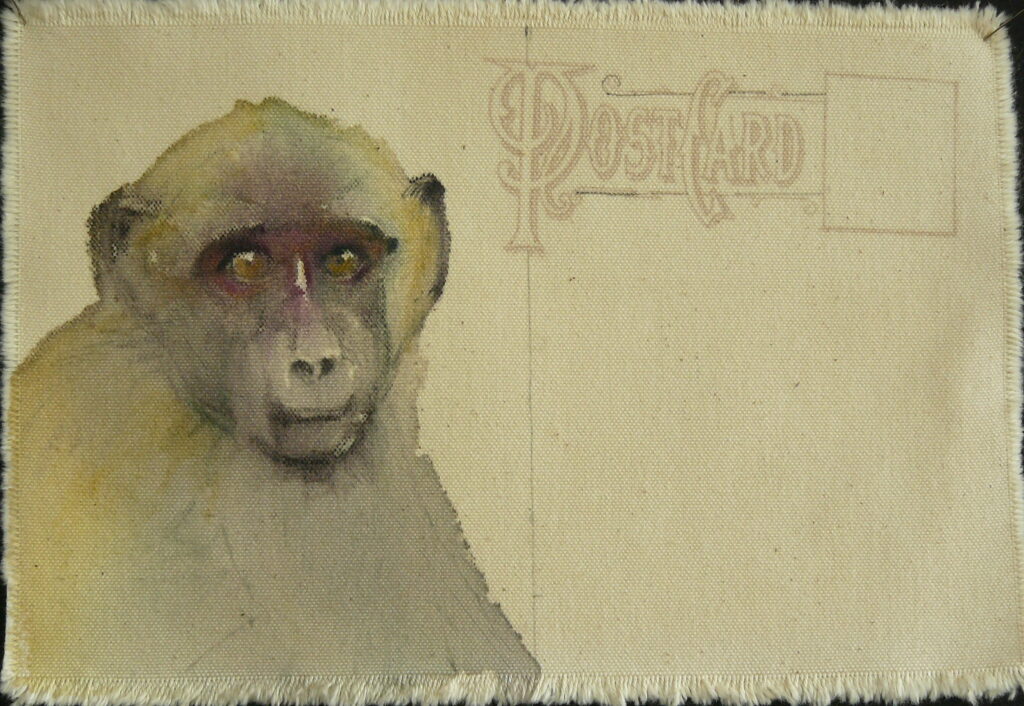

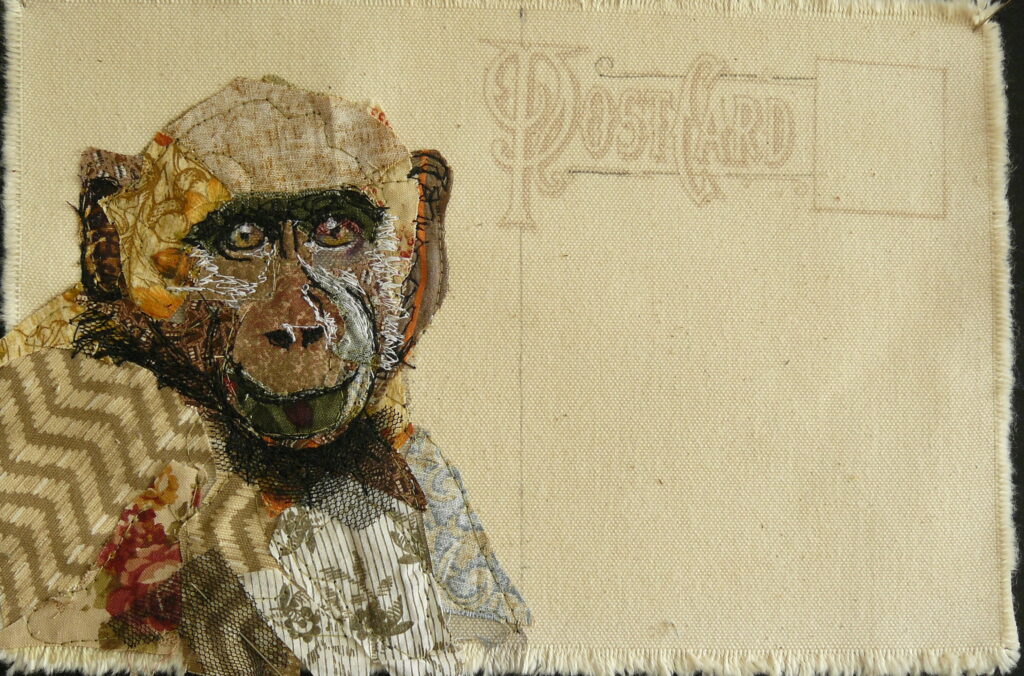

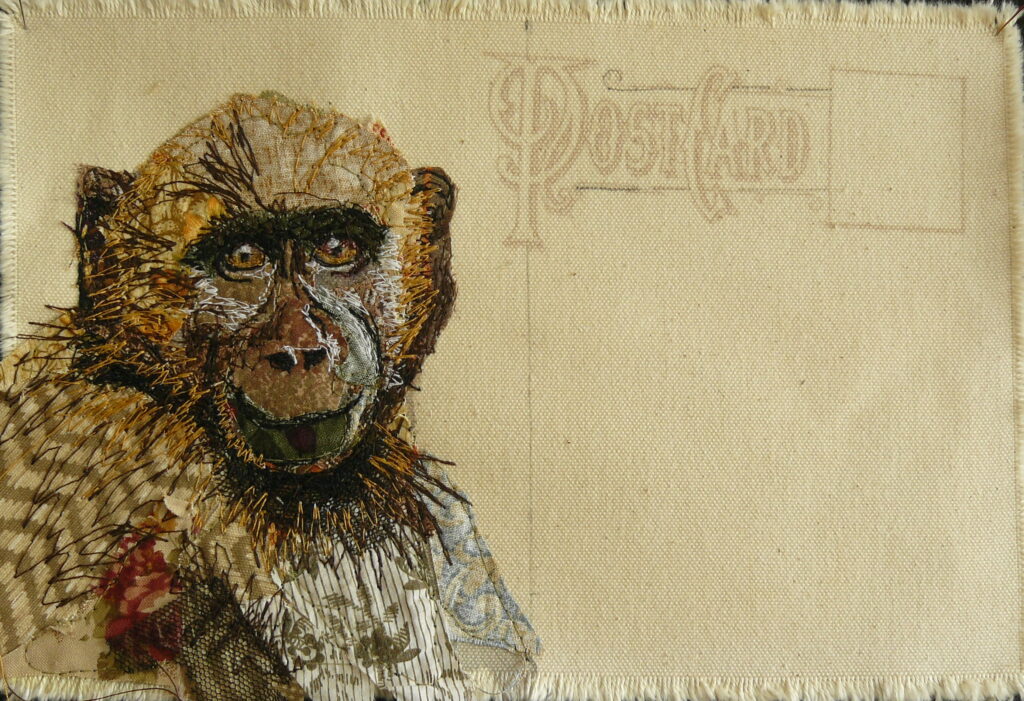

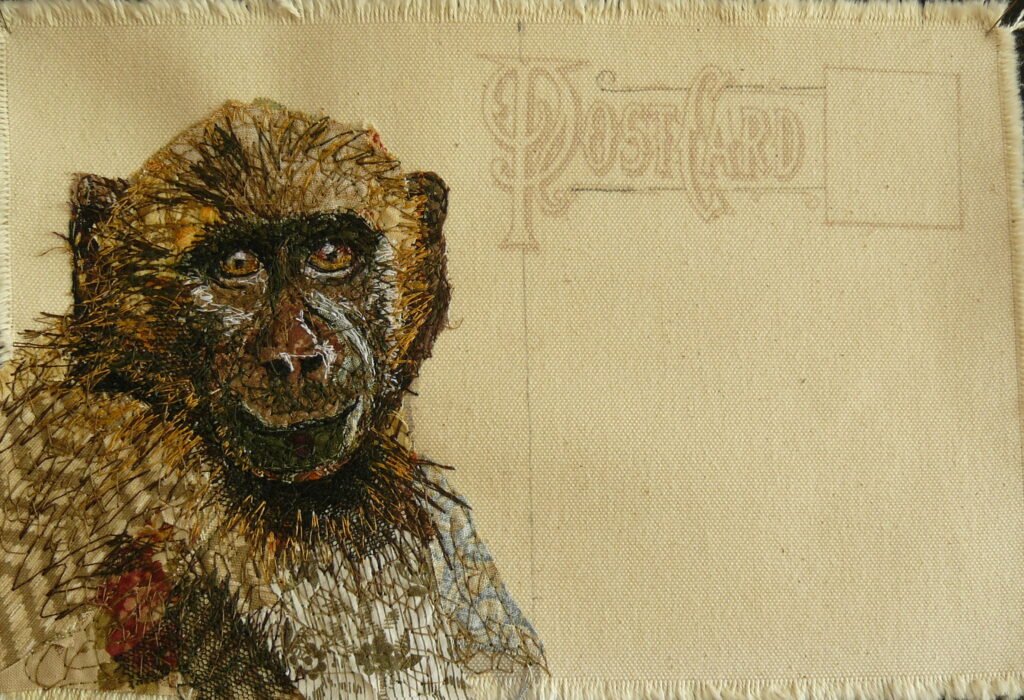
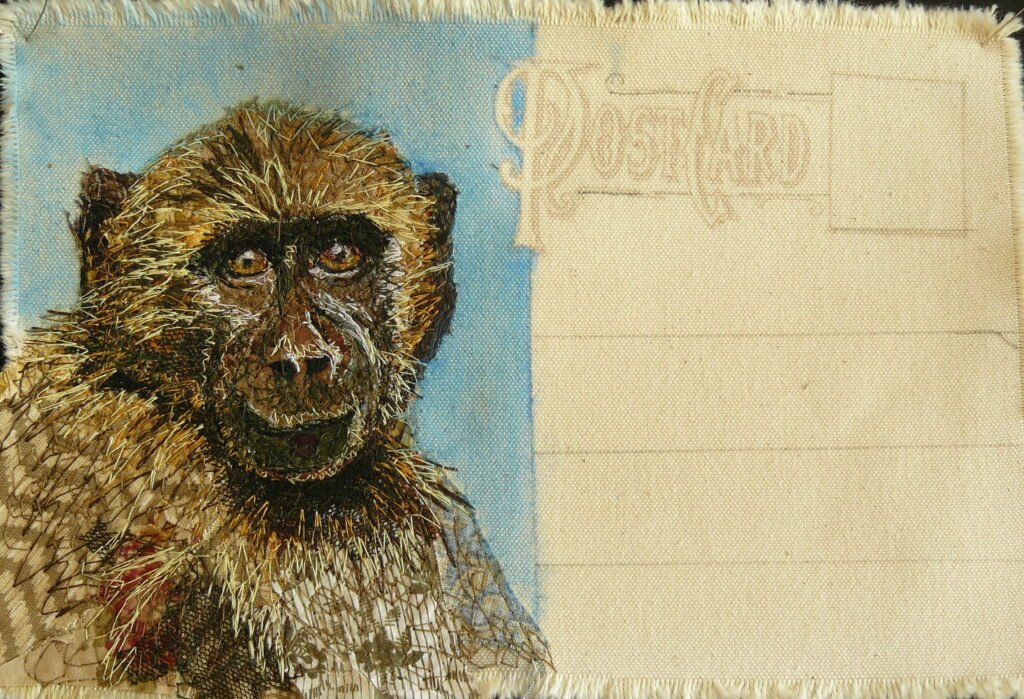
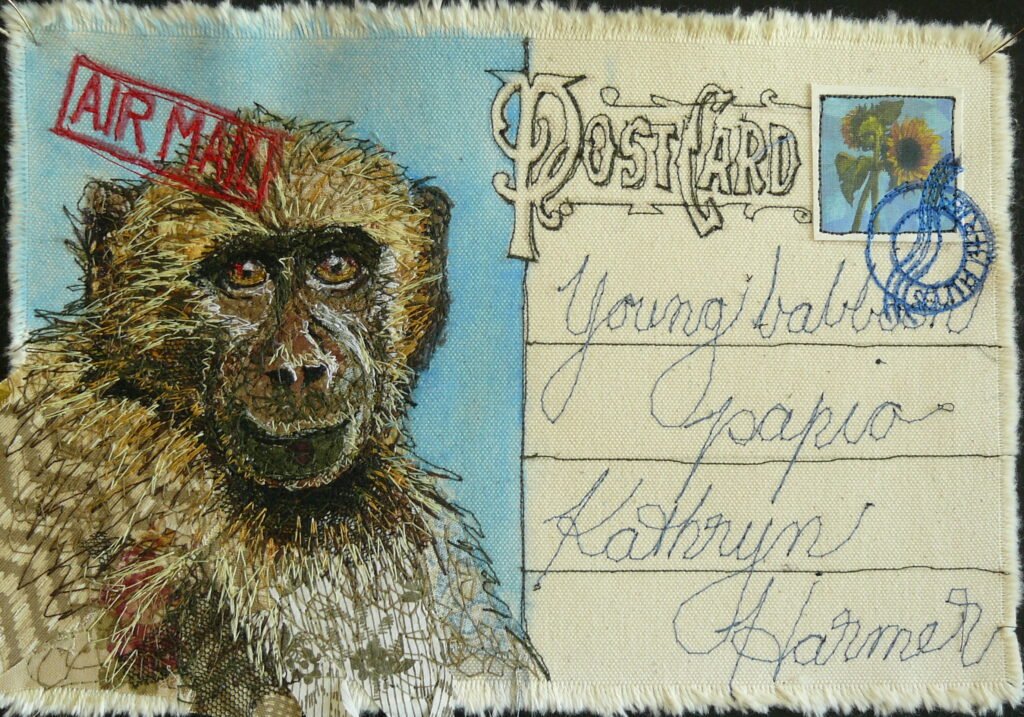
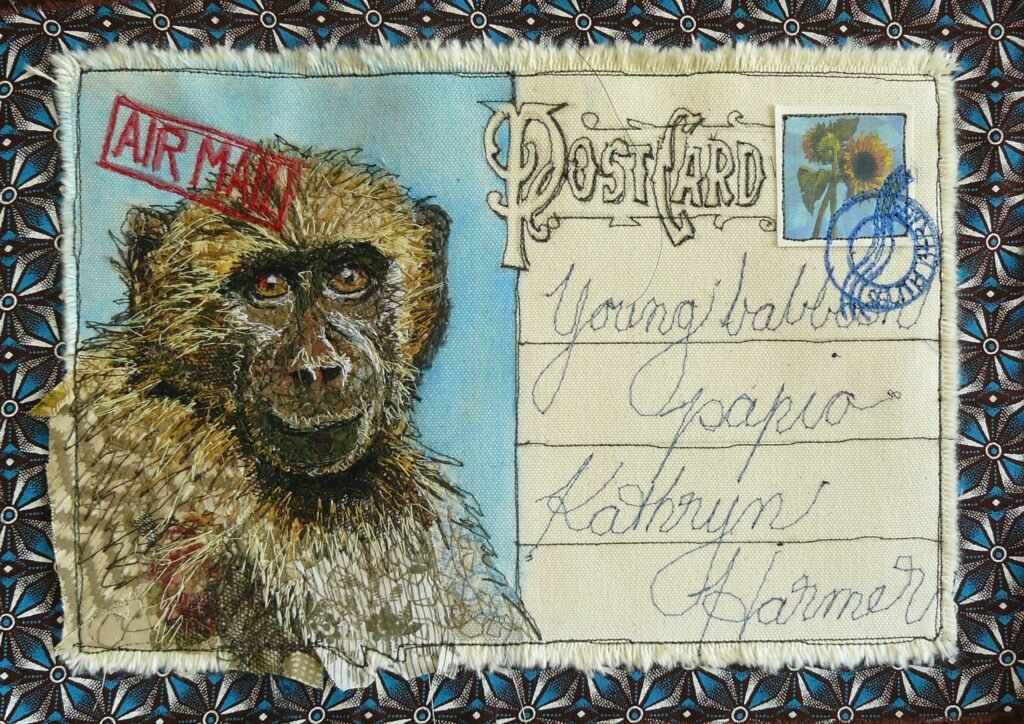
Wow! That’s fantastic!